How an airplane mechanic named Bennie Roth became the first Jew to set foot on Antarctica
Roth played an integral role in Commander Richard Byrd’s Arctic expedition
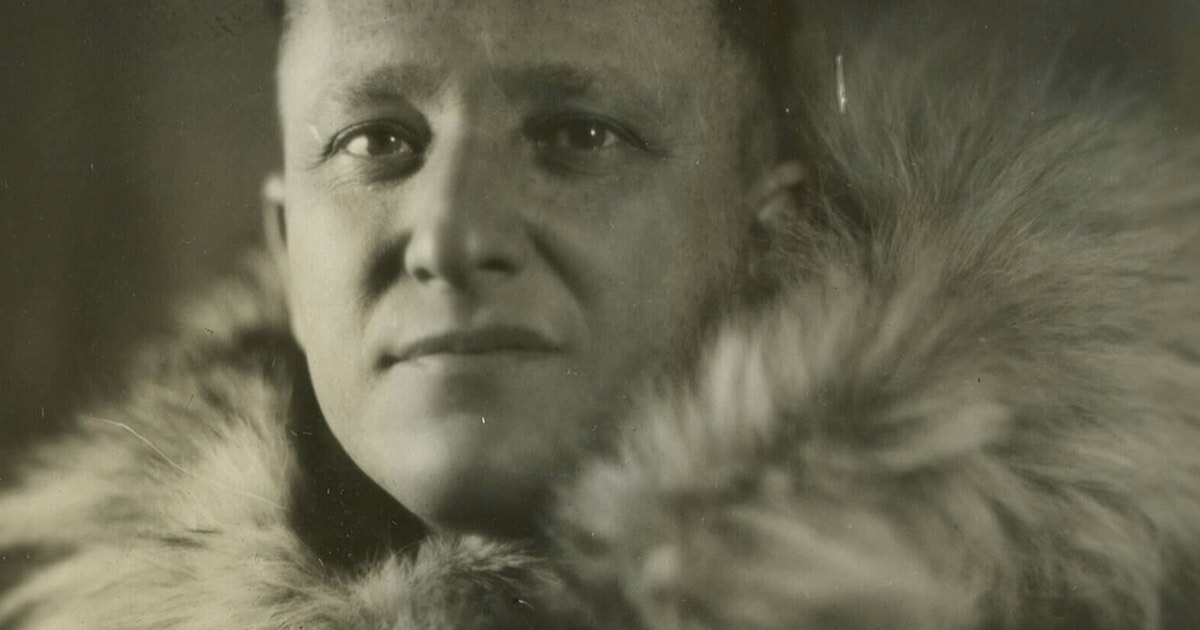
Commander Richard Byrd was looking for the best airplane mechanic around — he was told the best man for the job was Bennie Roth. Courtesy of Admiral Richard E. Byrd Papers, SPEC.PA.56.0001, Byrd Polar and Climate Research Center Archival Program, Ohio State University
When Commander Richard E. Byrd — an aviator, polar explorer and American hero who’d been feted with a ticker tape parade in New York City — was looking for the country’s best airplane mechanic to help him become the first man to reach the South Pole by air in 1928, he quickly settled on Benjamin “Bennie” Roth, who would soon become the first Jew to step foot on Antarctica.
Though a handful of hardy Jews, including the German doctor Emil Bessels of the Polaris, and the Michigan-born Edward Israel of the Greely Expedition, had made it to the Northern regions as part of Arctic expeditions in the 19th century, no member of the tribe had before been a part of any of the expeditions to the south during the so-called “Heroic Age of Antarctic Exploration” that lasted from the end of the 19th century to the early 1920s.
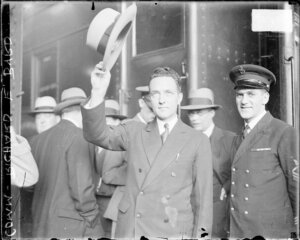
At 5’3”, Roth was the shortest man on the expedition. He was in his late 30s, quiet and unassuming, but also “a typical sergeant, kind of tough and hard-bitten,” according to Byrd’s pilot, the Norwegian Bernt Balchen.
Born on the Lower East Side of New York on Avenue A, and orphaned at a tender age, Roth had drifted from job to job, doing mostly mechanical work until he joined the Army at age 24. Discharged in 1919, he spent a few years as a car mechanic in Brooklyn before rejoining in 1921.
An expert in motor construction and repair, with a particular interest in airplanes, Roth rose to the rank of Staff Sergeant in the US Army Air Corps by 1928. During three month’s furlough after returning from service in the Philippines, he took a temporary job working at the Curtiss-Wright airplane plant in New Jersey, which is where he was when he heard Byrd wanted him for his upcoming expedition.
Byrd had asked Army officials to recommend the best airplane mechanic currently working, and they had unhesitatingly put forward Roth who, like Byrd, was a registered Mason. Roth won a berth on the whaler Larsen, one of four ships ferrying Byrd’s expedition members and supplies to Antarctica.
Roth proudly claimed that even though his career up to that point had been land-based, he did not get seasick at all during the month-long voyage to Antarctica. After reaching New Zealand, he transferred over to the expedition’s flagship, which then set off for Antarctic shores in November 1928.
The expedition landed on the shores of the Ross Ice Shelf, then known as the Great Ice Barrier, in December. The ships City of New York and the Eleanor Bolling anchored themselves to the Barrier to begin unloading the immense amount of supplies, including three planes, that would support the expedition for a year when the ships departed.
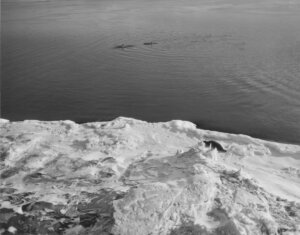
The Barrier, a vast floating sheet of ice larger than France, was the scene of the most memorable and newsworthy event that involved Roth. Accounts vary, but the basic story goes like this: Roth was walking along the Barrier’s edge observing crew members lifting supplies off the Eleanor Bolling and onto the ice, when the section of the Barrier he was walking on collapsed. Huge blocks of ice tumbled onto the deck of the Bolling and into the water beyond. Roth went with the ice, thankfully landing not on the hard deck of the Bolling but in the frigid water of the Bay of Whales.
Clothed in heavy furs and shouting, “I can’t swim!” Roth was spotted immediately by the Bolling’s crew, who in turn alerted Byrd.
By the time Byrd arrived on the scene, Roth had managed to grab hold of a chunk of floating ice. Though his crew tried to hold him back, Byrd leapt into the water after his loyal mechanic. “Hang on, Roth, old fellow, I’m coming to get you!” he cried. A heroic move, but probably unwise: The cold water stunned Byrd, and soon he too was struggling, leading a third man, Ralph Shropshire, to jump in—and of course now he needed saving too. The crew lowered a dinghy into the water, and rowed over to pick up Byrd, Roth and Shropshire.
The rescue was captured by the expedition’s Paramount Pictures cameramen, Joseph T. Rucker and Willard Van Der Veer, who would go on to win the only Academy Award for cinematography ever given to a documentary. The dramatic scene shows Roth falling, then being rescued and carried, frozen, back onto the Bolling.
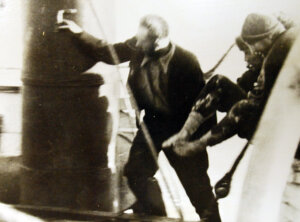
A month later, once the unloading was complete, Roth had the privilege of sitting in as a passenger on the expedition’s first test flight. He had won a card game in order to secure the valued seat on Jan. 15, 1929, on the Fairchild single-engine plane Stars and Stripes, which was the first flight in history to both take off and land on the Antarctic Continent.
However, possibly because of the fact that Roth quarreled with his fellow mechanics, some of whom subjected him to antisemitic slurs, his inclusion on the flight wasn’t publicized. Pete Demas, another mechanic on the expedition, disliked Roth strongly and had even performed a skit where he played a caricature called “Abie Jew.”
But Roth was there to do an important job, despite the occasional taunts from a handful of the 44 men wintering over in the base camp which Byrd had grandiosely named “Little America.” Byrd had entrusted him with care of the three expedition planes, kept in hangars underneath the snow all winter. The motors could not function in temperatures below negative 45 degrees, and during the cold months of Antarctic winter it sometimes fell below that, so the gear could not be worked on safely until it got warmer.
When spring arrived and work on the planes resumed, in order to prepare for the planned Polar flight, Roth — described as “serious as always and efficient” by the expedition’s official reporter Russell Owen — became an expert at warming up parts with blubber stoves and working with cold metal.
On Nov. 29, 1929, Byrd along with Balchen, radioman Harold June, and photographer Ashley KcKinley made history with a successful flight to and from the South Pole in the Ford tri-motor plane Floyd Bennett. They returned after 18 hours, having flown over the Pole and dropped an American flag from the plane, weighed down by a rock from Byrd’s good friend and late co-pilot Bennett’s grave, on the site.
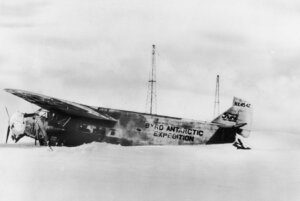
There were other flights too, including the reconnaissance mission that discovered Marie Byrd Land, to the east of Little America, with mountain ranges named after the expedition’s patrons Edsel Ford and John D. Rockefeller Jr.
Thanks in part to Roth’s expert work, not a single mechanical failure occurred on any of these flights, despite the bitter cold and high altitudes. A party did have to be rescued from the Rockefeller Mountains, but that was because the harsh weather had damaged their plane while it was on the ground, not because of any problem with the engines. Overall and certainly as regards Bennie Roth, the expedition was a major success.
Fond of Jewish food but not a particularly observant Jew himself, Roth carried with him to Little America a tallis, tzitzit, tefillin, and siddur given to him by his more observant brother Samuel. He admitted to a reporter that he didn’t use them, but did enjoy explaining what they were to other expedition members.
The time he spent in Antarctica included both Passover and the High Holy Days. Naturally, he couldn’t get any matzah for the former, but for the latter, he recited the prayers alone in his cabin — the first Jewish holiday celebrated on the seventh continent.
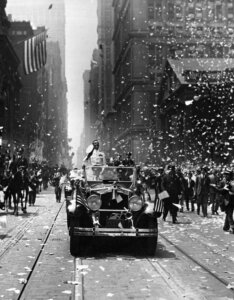
The Jewish Telegraphic Agency reported that according to other expedition members, Roth “never sought to hide his Jewishness. either in the Army or as a member of the expedition, but on the contrary, [was] very proud of it.” In the cities he arrived at on the way to and from Antarctica, such as Dunedin and Wellington in New Zealand, he was greeted and welcomed by the local Jewish communities.
The expedition members were all feted as heroes upon their return from New York, but Roth was “retiring and inconspicuous,” according to reporters. He was one of three members awarded the Soldiers’ Medal, for “heroism while serving as a member of the 1928-30 Byrd Antarctic Expedition.”
The commendation went on to say: “Sergeant Roth performed his duties as airplane mechanic in a most meritorious manner and by his conduct and devotion to duty in the face of great danger, even after having nearly lost his life when a part of the barrier cliff collapsed, gained several commendations and recommendations for promotion from the expedition commander and brought great credit to himself, the expedition and the United States Army.”
Byrd’s expeditions discovered thousands of square miles of the Antarctic continent and made great strides in the science of exploration, and he became a superstar thanks to all the publicity around it. He went on to direct three more expeditions to Antarctica, a second private one and then two more under the auspices of the Navy, and grew ever more famous.
But after the initial frenzy upon his return, his medal and the many dinners held in his honor, Bennie Roth was mostly forgotten. He was promoted to Master Sergeant, the highest NCO rank in the army at that time, and assigned a post at Mitchel Field in Long Island.
When he received his expedition medal in 1931, Roth wrote to Byrd thanking him, expressing his “utmost respect and regard for you, as our Commander, and the man who was wholly responsible for the success of that Expedition.” The loyalty went both ways. Byrd was very grateful for Roth’s work. The first expedition’s three mechanics, including Roth, had “the grueling work on the engines in the cold without any of the joy or adventure of the flight,” Byrd had told reporter Owen, during the winter of the expedition. “When we start out we will be riding those engines, and I hope that the vitally important part they have played will not be forgotten as is usually the case.”
In 1932 Roth married a divorcee, Marie Meyers, with a young daughter, Eleanor, and they lived in Army housing near the airfield. Byrd was invited to the wedding, and sent Roth a letter of congratulations; the Admiral had kept in touch with all of his men, including Roth, providing them letters of recommendation, photo albums of the expedition, and in Roth’s case, a specially autographed photograph of himself for Roth to remember him by.
Roth did not return to Antarctica when Byrd went back in 1933, but remained with the military. By the time of his death in 1967 he had risen quietly and efficiently to a commissioned rank as Captain in the US Air Force. His headstone in Long Island National Cemetery shows no indication of the fact that he was the first Jew to visit the Great White South.














